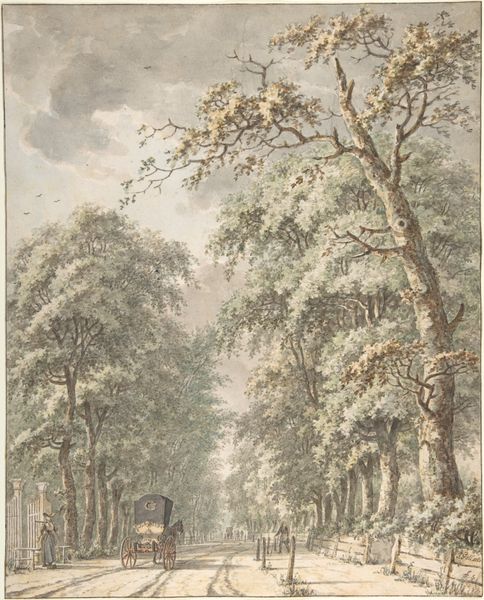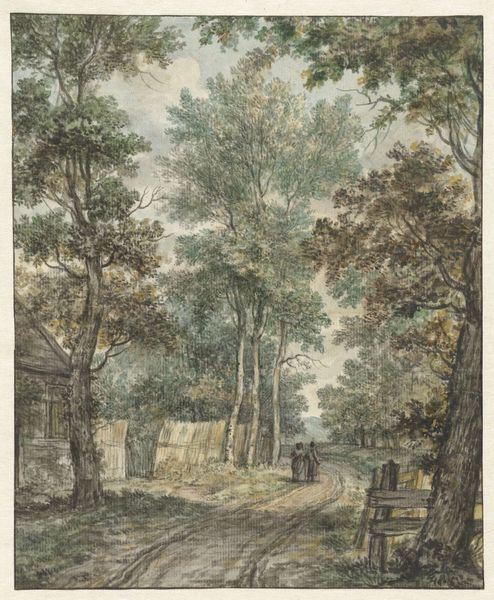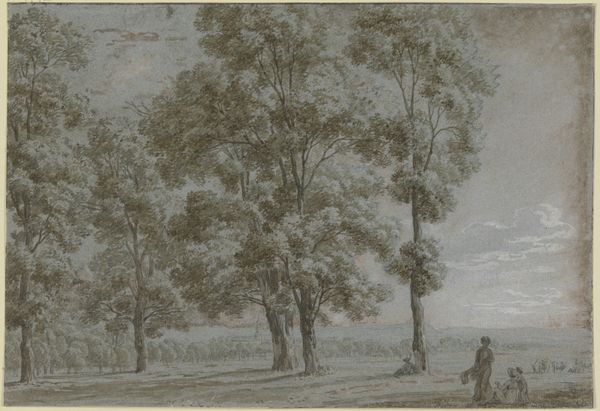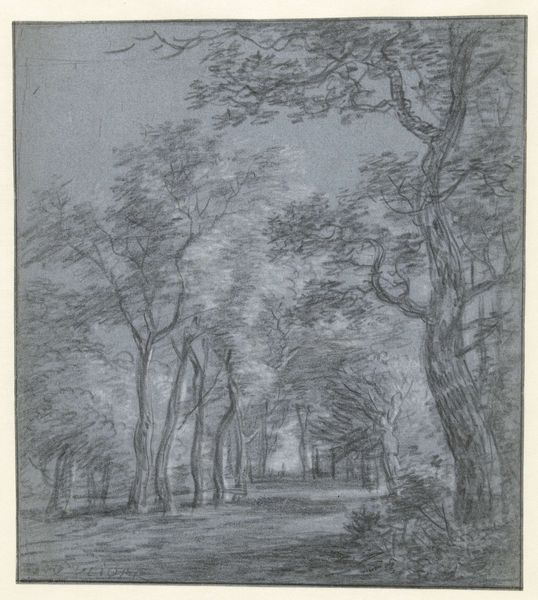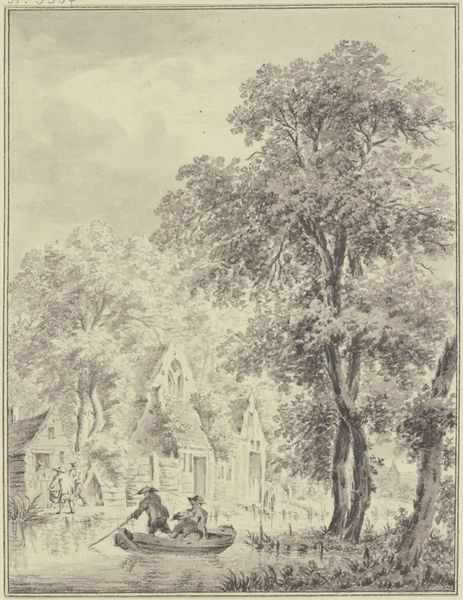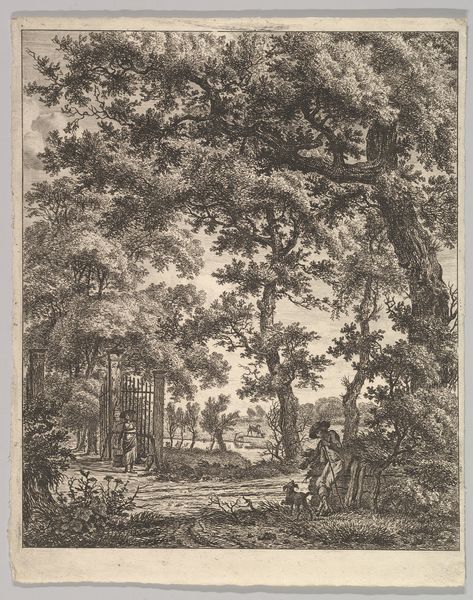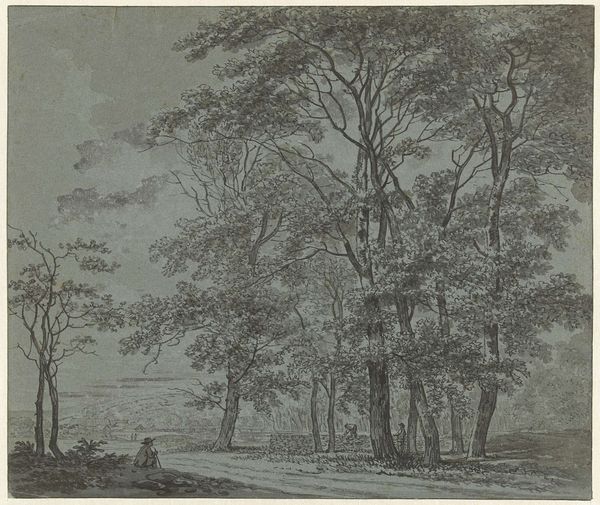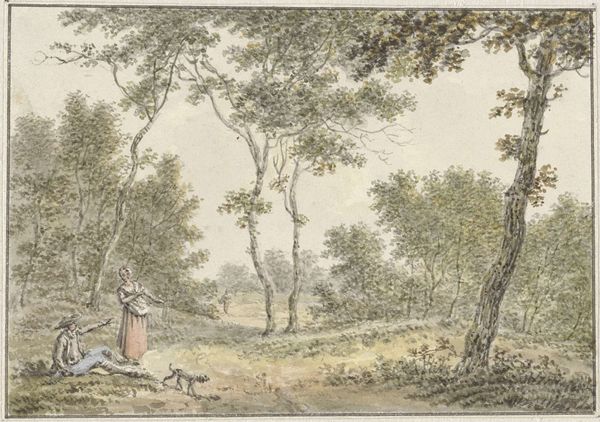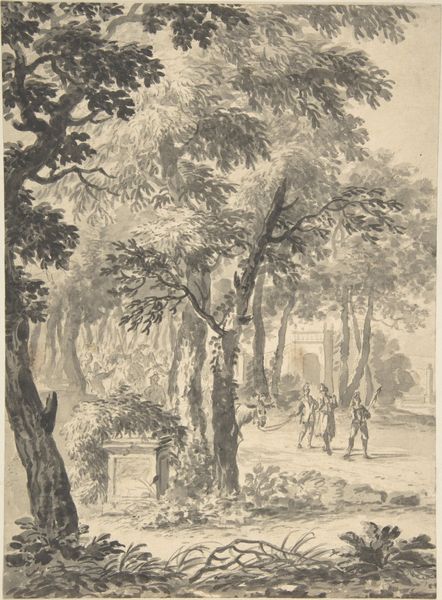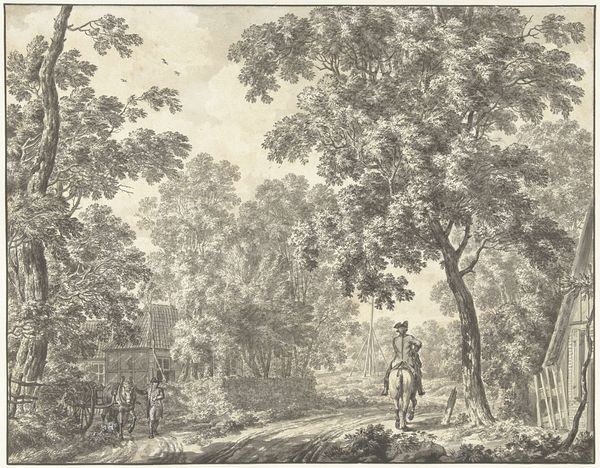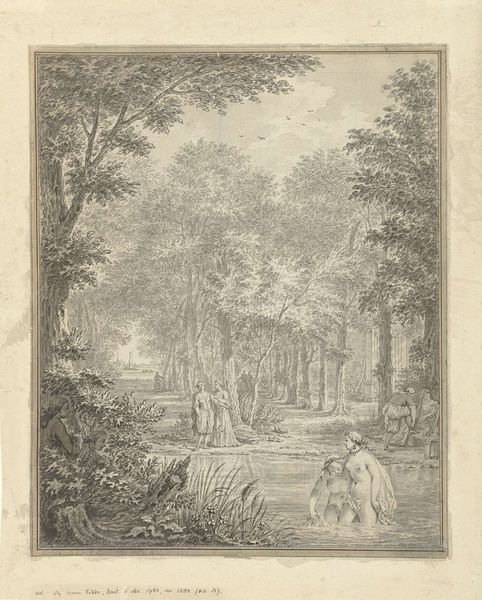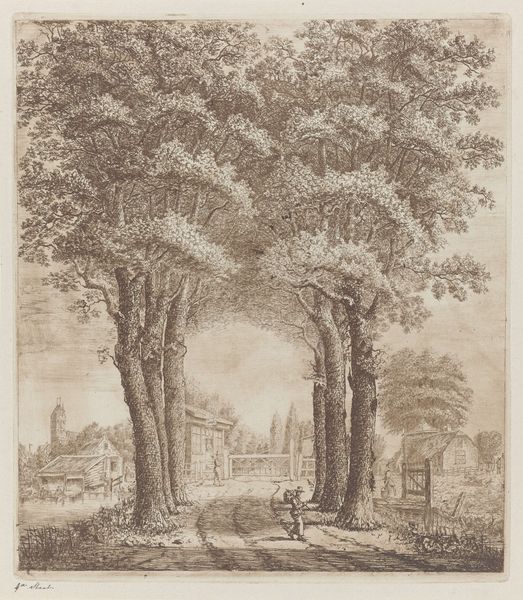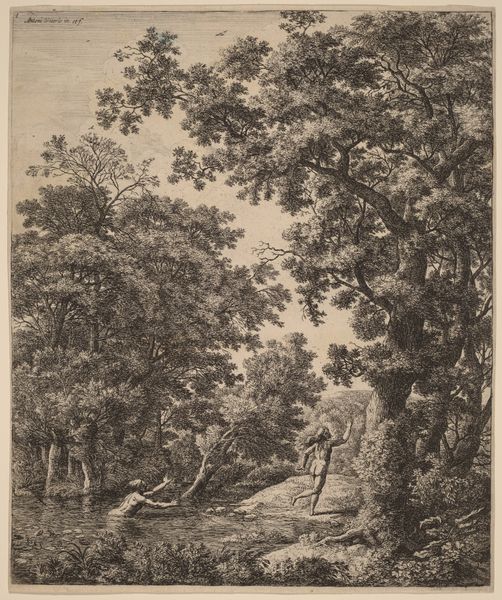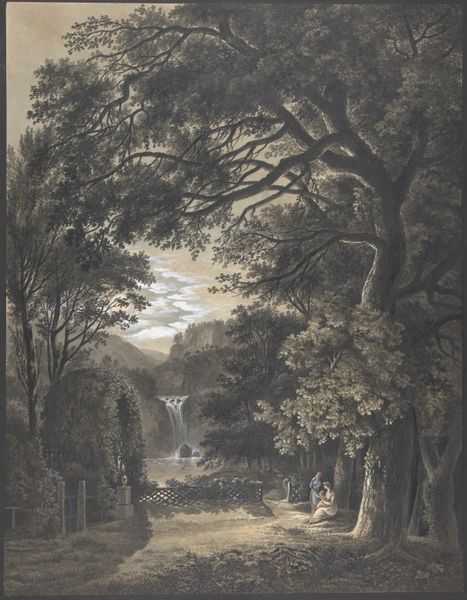
drawing, plein-air, watercolor
#
drawing
#
water colours
#
plein-air
#
landscape
#
watercolor
#
coloured pencil
#
romanticism
#
watercolor
Dimensions: sheet: 25.3 × 18.6 cm (9 15/16 × 7 5/16 in.) mount: 29.6 × 23.1 cm (11 5/8 × 9 1/8 in.)
Copyright: National Gallery of Art: CC0 1.0
Curator: This watercolor drawing, titled "A Wooded Path at Treslong, near Hillegom", was created in 1789 by Jurriaan Andriessen. It's interesting how plein-air techniques are captured. What's your initial impression? Editor: It feels incredibly peaceful, almost hushed. Like that moment just before the rain when the world seems to hold its breath. The misty atmosphere, combined with the lone figure, definitely sets a melancholic tone. Curator: The romanticism really comes through, doesn't it? And given that Andriessen was working during a period of immense social and political upheaval across Europe, it raises some questions about escapism and the relationship between the individual and nature. Was this an attempt to create an idyllic scene distanced from the realities of society at the time? Editor: Absolutely! There is something comforting about the soft edges and blurry foliage that speaks of longing for a simpler time. Makes me want to grab my walking stick and join that red-coated character lurking beside the trees. He’s either enjoying the landscape or waiting to ambush someone—or both. Curator: Indeed. Also, notice how the path bisects the composition, leading our eye deeper into the wooded area. Considering ideas around constructed landscapes and nature as refuge during moments of societal instability might unlock further insights here. How might such artworks have impacted 18th-century understandings of the Dutch countryside? Editor: Good point! Now I am considering the use of color to convey feeling: there's an almost monochromatic range here, broken only by the solitary spot of red on the coat. It really makes you think of this person as existing in another reality or a sort of fairytale setting. Curator: Those color choices—primarily blues, greens, and grays—certainly enhance the atmosphere and draw out specific emotions related to being alone, maybe some even stemming from class-based divides or inequalities... Editor: Okay, I can get behind that—now, finally, it feels less like an 18th-century landscape and more like a story that’s being revealed to me—both romantic, perhaps, but also charged. Curator: Well, I appreciate how the conversation unfolded here, illuminating our personal encounters. It brings important attention to this piece, which I hope will create new questions around 18th century drawings for others to enjoy. Editor: Likewise. I look forward to the next conversation that helps reframe an artwork for modern perspectives. Thanks.
Comments
No comments
Be the first to comment and join the conversation on the ultimate creative platform.
